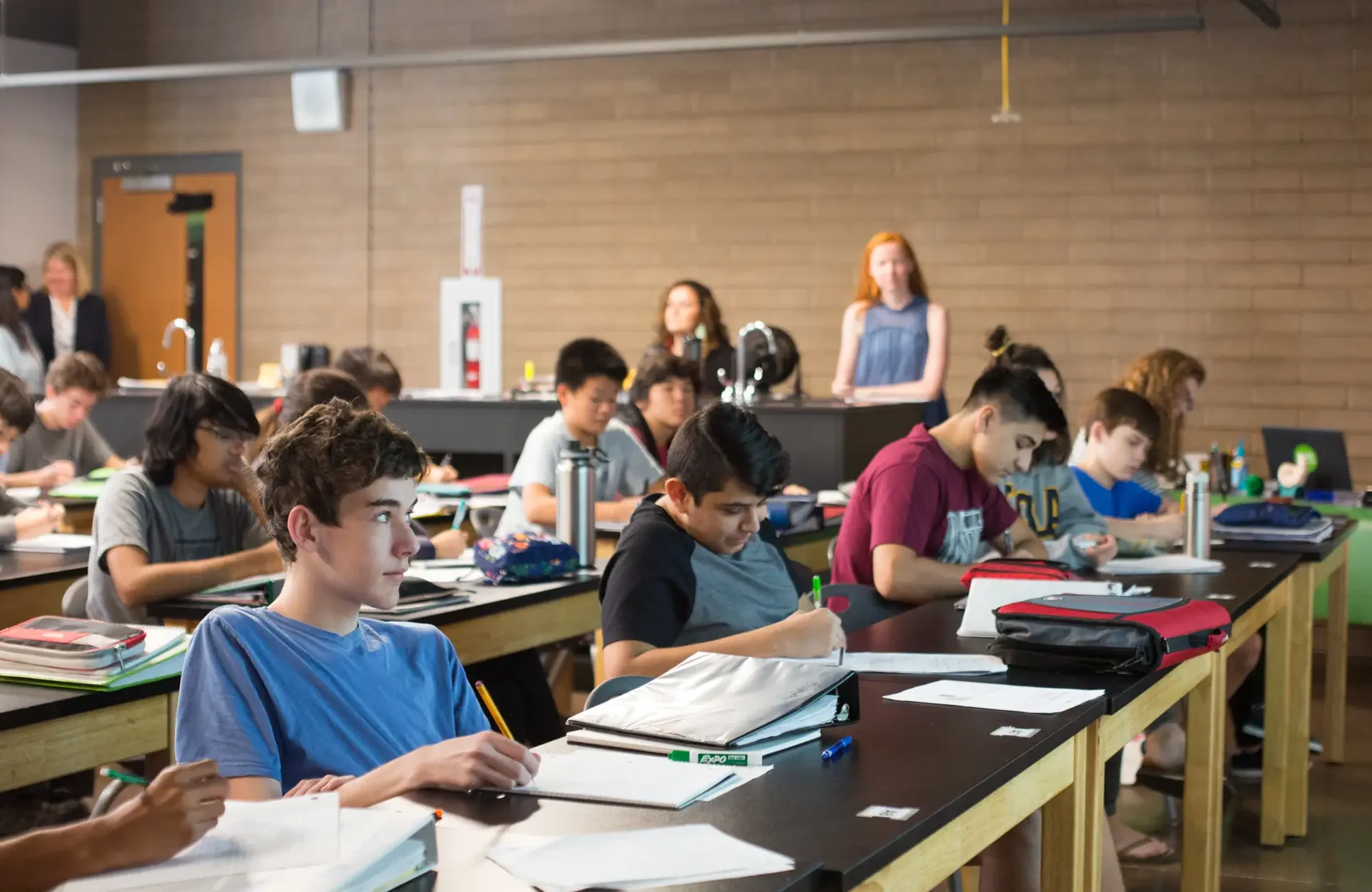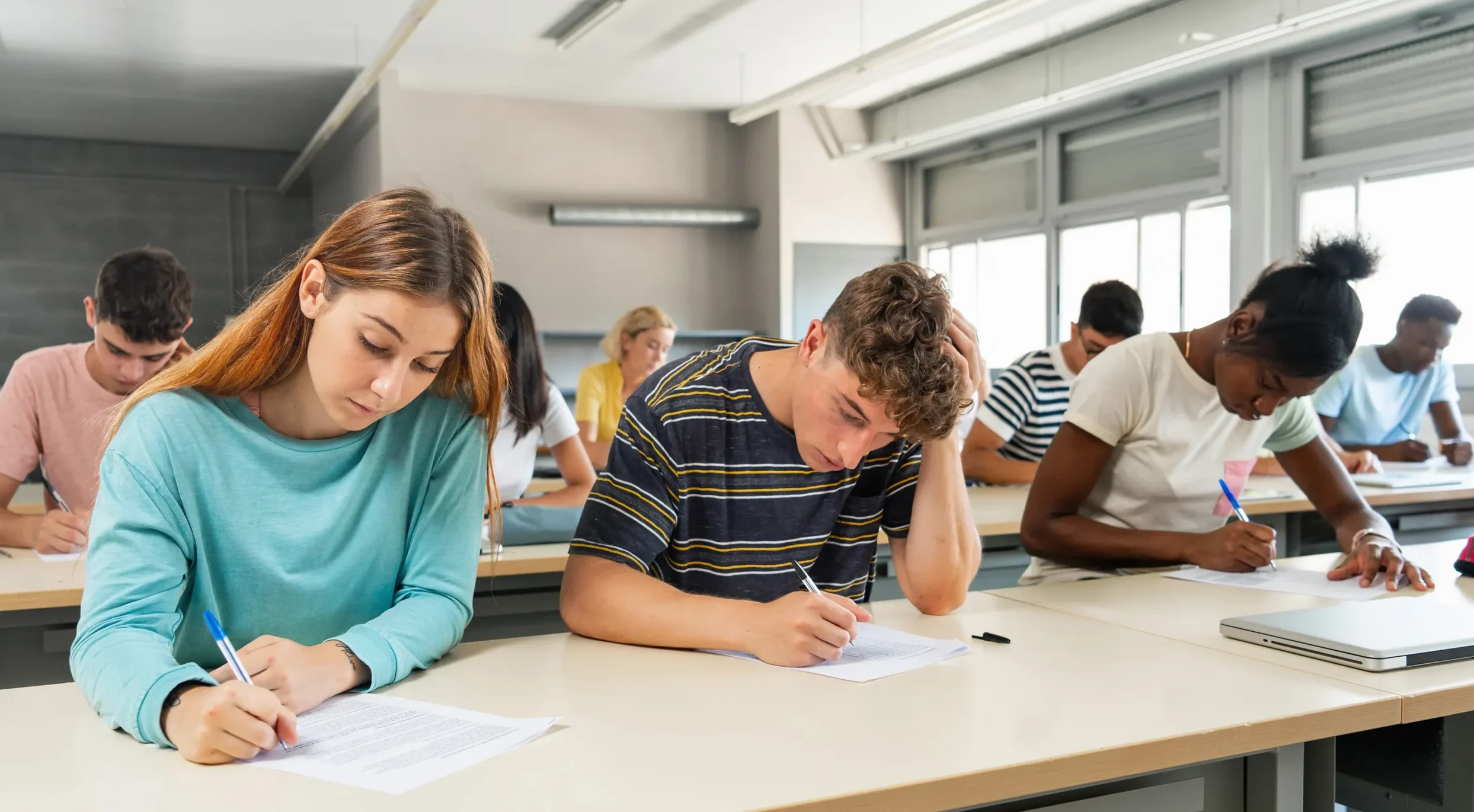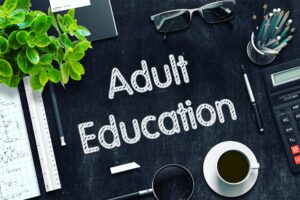Junior high school is an integral part of a student’s education because it bridges the gap between the caring environment of elementary school and the more demanding academic environment of high school. This critical stage, also known as middle school in many locations, typically serves children aged 11 to 14 and encompasses grades 6 to 8, with some districts also including grade 9.
What Is Junior High School Education?
Junior high school is a unique stage of education that addresses the specific developmental needs of young teenagers. Junior high is different from elementary school since kids learn in departmentalised settings, moving between other teachers and subjects throughout the day.
This type of school system has many benefits. It prepares kids for the independence they will need in high school, teaches them more complex academic concepts, and supports them through the challenging years of early adolescence, marked by significant physical, emotional, and social changes.
The Core Structure of Junior High Education
Academic Framework
The standard junior high curriculum includes several basic subjects that expand on what pupils learned in elementary school and get them ready for more difficult high school classes:
English Language Arts is a crucial component of communication skills, encompassing reading comprehension, writing mechanics, literary analysis, and public speaking. Students progress from writing simple paragraphs to producing essays that are several pages in length. They also begin to analyse complex literature, such as poetry, short stories, and novels.
Mathematics moves from simple math to ideas in pre-algebra and algebra. Many schools now offer accelerated math programs that enable advanced students to complete Algebra I by eighth grade. This puts them on schedule to take calculus in their senior year of high school.
Science education typically takes an integrated approach, covering the basics of physics, life science, and Earth science. Some progressive programs teach engineering concepts and place a strong emphasis on hands-on lab work.
Social Studies encompasses not only the local community but also world geography, ancient civilisations, and American history. This helps students learn how to think critically about historical trends and cultural differences.
Elective Opportunities
Modern junior high schools recognise the importance of allowing students to explore various interests through elective classes. Some of the most popular choices are visual arts, music, foreign languages, technology education, and job exploration. These electives generally lead to high school specialisations, which help kids figure out what kinds of jobs they would like.
Current Trends Shaping Junior High Education

Technology Integration Revolution
The shift to digital learning in junior high schools has accelerated significantly, particularly since the COVID-19 pandemic. Schools are implementing one-to-one device programs, in which each student receives a laptop or tablet for use in schoolwork and academic activities. This change has completely transformed how children access information, complete their homework, and collaborate with their peers.
Now, educational technology platforms personalise learning experiences that adapt to each student’s pace and learning style. Coding classes, virtual reality experiences, and interactive whiteboards are becoming typical parts of current junior high school curricula.
Social-Emotional Learning Emphasis
Recognition of adolescent mental health needs has led to increased focus on social-emotional learning (SEL) programs. These programs help children learn how to manage their emotions, show empathy, build relationships, and cope with stress. Many schools now offer mindfulness activities, peer mediation programs, and special advisory periods that focus on personal growth.
STEM and STEAM Integration
Junior high schools are rapidly expanding their Science, Technology, Engineering, Arts, and Mathematics (STEAM) programs. These ideas from various fields encourage problem-solving, creativity, and applying what you learn in school to real-life situations. Robotics clubs, coding classes, and maker spaces are increasingly common in junior high schools that are more forward-thinking.
Flexible Scheduling Models
More flexible schedules are replacing rigid bell schedules. These new plans are better at meeting the demands of all types of learners. Block scheduling allows students to spend more time in class, enabling them to learn more about their subjects. Rotating timetables helps students adjust to the new routines they’ll have in high school.
Key Statistics and Data Points
Recent education research has revealed important information regarding how well junior high schools work and how well students do:
The National Association of Secondary School Principals says that schools with complete middle school programs have 15% more students who are engaged than schools with standard junior high programs. Students in these programs tend to perform better academically and get along better with their peers.
The National Middle School Association reports that when schools prioritise both academic rigour and social-emotional support, 68% of junior high students report feeling more prepared for high school. This type of preparation makes a significant difference in the number of students who graduate from high school and are prepared for college.
Junior high students in schools with effective advisory programs attend school an average of 94% of the time, whereas those in schools without these programs attend school only 87% of the time. This difference is linked to better academic results and a lower chance of dropping out in subsequent years.
Academic and Social Development Focus
Cognitive Development Support
Junior high school counsellors should be aware of significant changes in thinking that occur during the early teenage years. Students move from pragmatic operational thinking to formal operational reasoning. This helps students understand abstract ideas, create scenarios, and devise complex solutions to problems.
Educators design curricula that challenge students appropriately while providing necessary scaffolding. This might include graphic organisers for complex writing assignments, hands-on science experiments that illustrate abstract principles, and collaborative projects that develop both academic and social skills.
Identity Formation and Peer Relationships
The years of junior high are pretty crucial for developing one’s sense of self. Schools are beginning to recognise the importance of helping children develop healthy identities by offering a range of extracurricular activities, leadership roles, and classrooms that welcome students from diverse backgrounds and skill levels.
During these years, relationships with peers become increasingly crucial. A good junior high program provides students with a structure and opportunities to interact with others positively, also addressing issues such as bullying, exclusion, and social anxiety.
Addressing Modern Challenges
Mental Health and Wellness
Junior high school children are dealing with mental health problems like never before, and the number of kids with anxiety and depression is rising. Progressing in incorporating comprehensive, complete wellness programs into their regular classes. These programs include counselling, stress-reduction strategies, and mental health instruction.
Many school systems now have mental health experts who work only with junior high students because they know that helping kids with their problems early on helps save them from getting worse later on.
Digital Citizenship and Online Safety
As schools increasingly use technology, they must teach their students how to be responsible digital citizens. This involves educating children on how to behave online, recognising cyberbullying, safeguarding their personal information, and maintaining healthy connections with technology.
Programs typically work with families to ensure that kids receive the same message about how to use technology responsibly, both at school and at home.
Academia under Pressure and Competition
People are concerned about the excessive academic pressure on junior high school children due to the increasing emphasis on preparing them for high school. Balanced programs focus on building strong foundational skills while keeping expectations realistic for the child’s age and providing opportunities for exploration and creativity.
Preparing Students for High School Success

Study Skills andOrganisationn
Increasingly, junior high schools are focusing on executive function skills that children will need to excel in high school. This encompasses skills such as time management, organisation, note-taking, and self-assertion.
Many schools offer specific study skills classes that teach students to utilise planners effectively, break down large projects into manageable parts, and seek help when needed.
Independence and Responsibility
The transition from the more structured setting of elementary school to the more independent setting of junior high is carefully planned. Students gradually learn to take on more responsibility for their own education. For example, they learn to handle multiple tasks, move between classrooms, and communicate directly with various teachers.
Academic Planning and Goal Setting
Looking ahead, Students learn about academic planning in junior high school, which helps them comprehend how their decisions now may affect their options in the future. This could include learning about various high school paths, participating in activities that explore careers, and setting career-related goals.
The Role of Family and Community
Parent and Guardian Involvement
For junior high school to be successful, schools and families need to work well together. However, the way this involvement evolves is based on patterns established in elementary school. Parents are advised to encourage their children’s independence while remaining involved in their education.
Schools typically offer services to help families navigate this change, such as workshops on how to communicate effectively with teens, assist them with schoolwork, and manage their behaviour.
Community Partnerships
Many junior high programs collaborate with neighbourhood groups to enhance learning opportunities. This could include service-learning projects that address the community’s needs, mentorship programs with local businesses, and field experiences that connect classroom learning to real-world applications.
Looking Toward the Future
Personalised Learning Pathways
In the future, Junior High School Education will likely personalise learning experiences that adapt to each student’s needs, interests, and goals. This could mean allowing children to choose how fast they learn, what types of learning activities they engage in, and which classes they take to prepare for their specific high school and career goals.
Global Connectivity and Cultural Competence
As the world becomes increasingly interconnected, junior high programs are expanding their focus on global awareness and cultural competence. This involves teaching children how to speak other languages, setting up pen pal programs with children from other countries, and ensuring that children learn about different perspectives and global challenges.
Environmental and Sustainability Education
As more people become aware of environmental problems, junior high programs are placing a greater emphasis on teaching sustainability. Students learn about environmental science, how to live in an environmentally friendly manner, and how they can contribute to combating climate change and conserving resources as global citizens.
Conclusion
Obtaining a junior high school education is a crucial step toward lifelong learning and personal growth. When done right, these programs provide students with the academic preparation, social and emotional support, and life skills they need to succeed in high school and beyond.
The best junior high programs recognise that students of this age require a balance of challenge and support, as well as freedom and guidance, combined with hard work and creative expression. Junior high school can set the stage for lifelong success and happiness by focusing on the whole child throughout these critical years.
FAQs
Q: What is the main purpose of junior high school?
Junior high school serves as a bridge between elementary and high school, helping students transition academically, socially, and emotionally. It introduces students to departmentalised learning, promotes independence, and builds the foundational skills needed for success in more advanced studies.
Q: What grades are typically included in junior high school?
In most educational systems, junior high school includes grades 6 to 8, though some districts extend it to grade 9. It usually caters to students aged 11 to 14, focusing on early adolescence — a critical stage of personal and intellectual development.
Q: How does junior high differ from elementary school?
Unlike elementary school, where one teacher usually covers multiple subjects, junior high students have different teachers for each subject. This system prepares them for high school’s structure, develops responsibility, and helps them manage time and diverse academic expectations.
Q: What subjects and programs are offered in junior high?
The core curriculum includes English Language Arts, Mathematics, Science, and Social Studies, complemented by elective courses such as art, music, foreign languages, and technology. Many schools also integrate STEM/STEAM programs, social-emotional learning (SEL), and digital literacy training to support well-rounded development.
Q: How do junior high schools prepare students for high school success?
Junior high schools focus on teaching study skills, time management, goal setting, and self-advocacy. Students also learn to take responsibility for their learning, navigate multiple teachers and classes, and explore interests that inform future academic and career paths. These skills and habits make the high school transition smoother and more successful.








